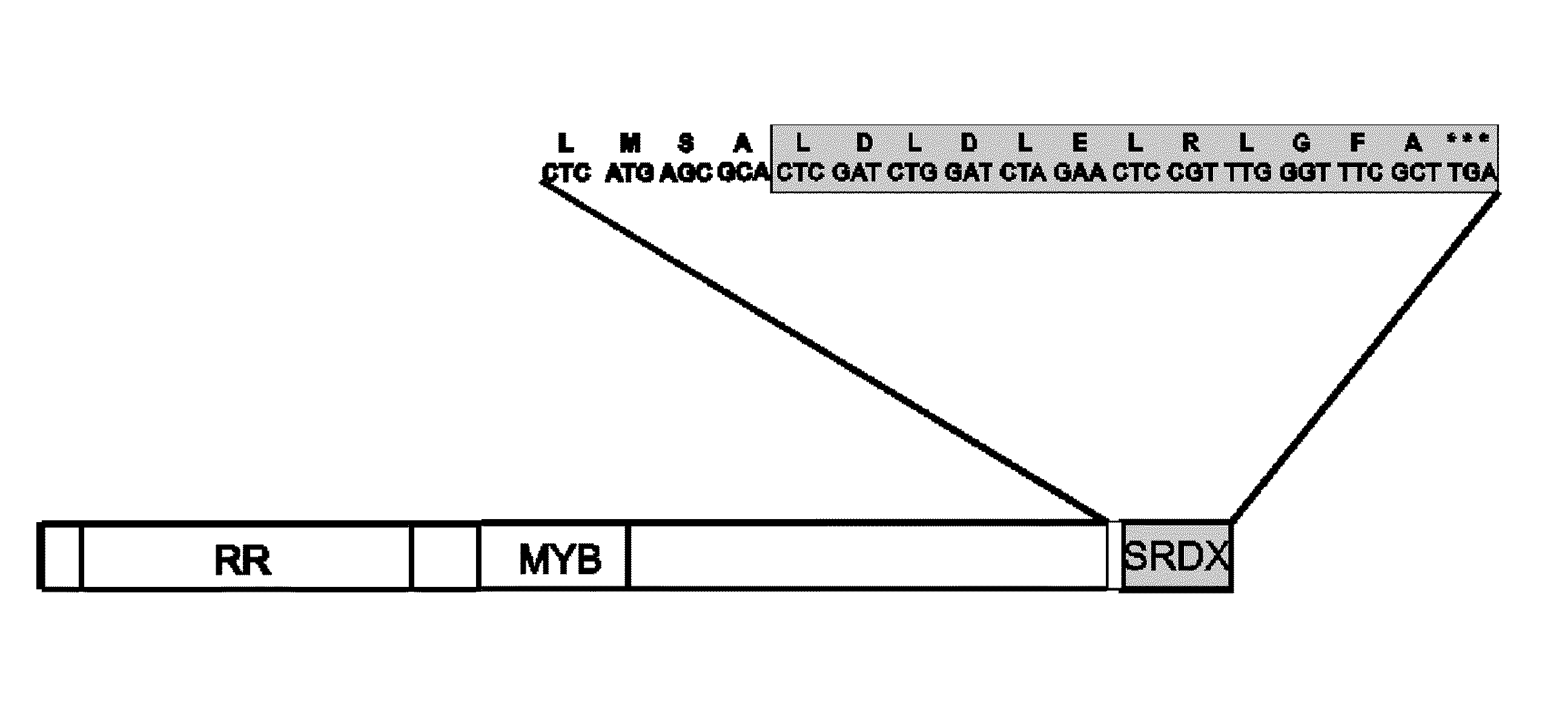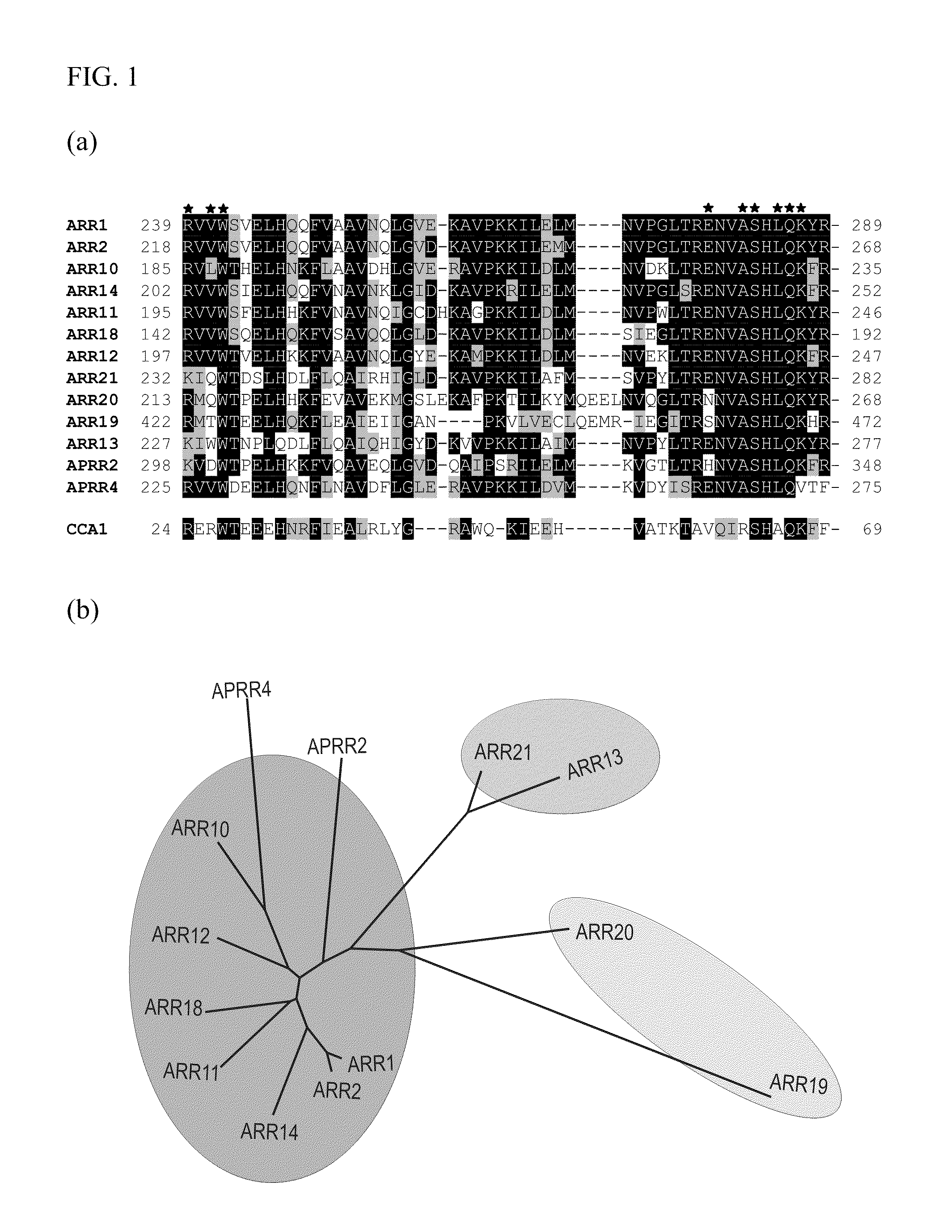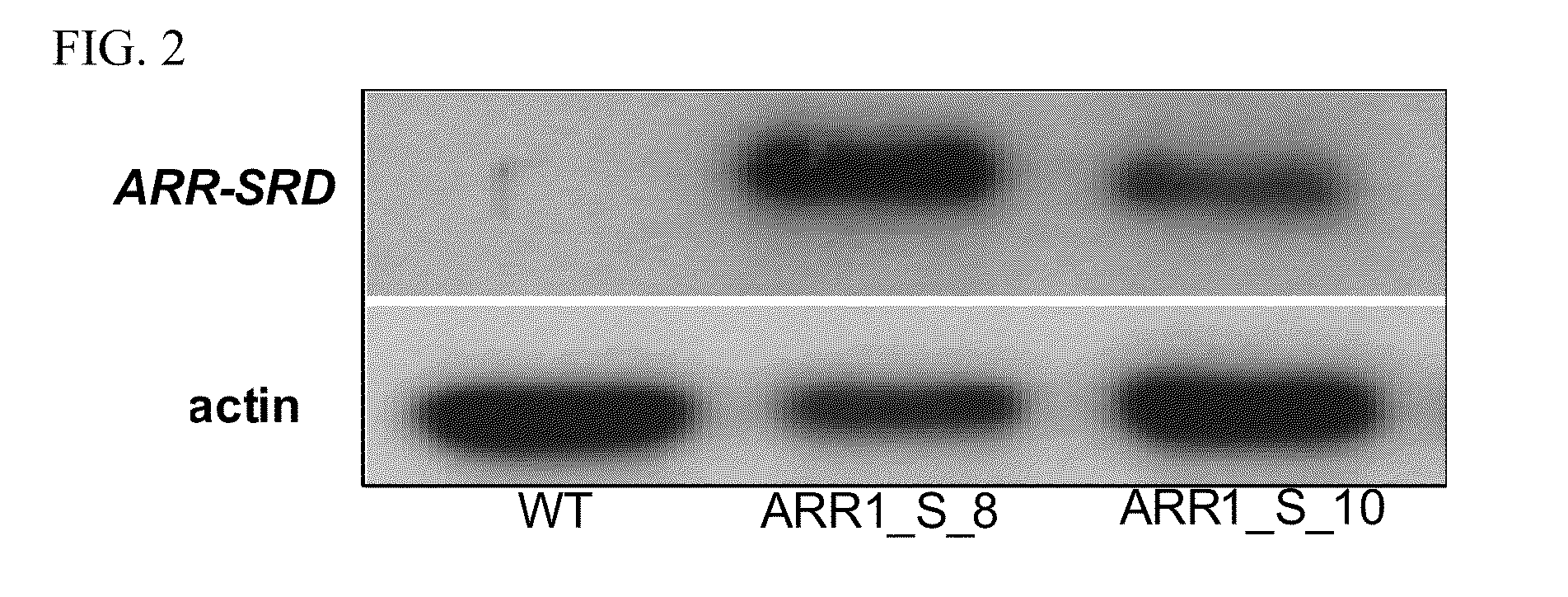Transcriptional Repressors of Cytokinin Signaling and Their Use
a transcriptional repressor and signaling technology, applied in the field of fusion proteins, can solve the problems that the technology has not yet been used to investigate, and achieve the effects of enhancing the seed size, root mass, root length and/or root branching, and reducing the loss and/or germination time of the seed of the plan
- Summary
- Abstract
- Description
- Claims
- Application Information
AI Technical Summary
Benefits of technology
Problems solved by technology
Method used
Image
Examples
example 1
Sequence Analysis of the DNA-binding domains of B-type ARRs
[0157]The CRES-T is based on the dominant repression of target gene expression. To be effective as repressors of a whole protein family, the DNA-binding domains and thus the promoter target sequences of those transcription factors should be similar. Therefore we analyzed first the similarity of the DNA-binding domains of B-type ARRs and of pseudo response regulators APRR2 and APRR4, which contain a MYB DNA-binding domain (Makino et al., 2000). The respective domains were identified using the Pfam programme (Finn et al., 2006) and subsequently the sequences were aligned using the Clustal W algorithm (Thompson et al., 1994) (SEQ ID NO: 1 to SEQ ID NO: 11, SEQ ID NO: 60 to SEQ ID NO: 61; FIG. 1a). The DNA-binding domain of another MYB-protein, CCA1, which has a complementary target sequence to the B-type ARR1 (Wang et al., 1997), was also added to the alignment (SEQ ID NO: 62).
[0158]The DNA binding domain of ARR1 (SEQ ID NO: 1)...
example 2
Generating the ARR1-SRDX Fusion Protein and Transgenic Plants Expressing the Fusion Protein
example 2.1
Generating the ARR1-SRDX Fusion Protein
[0159]The protein coding region of the ARR1 gene was amplified by PCR using a cDNA library from Arabidopsis thaliana C24 (Minet et al., 1992). The DNA fragment coding for the SRDX peptide (SEQ ID NO: 52: LDLDLELRLGFA; (Hiratsu et al., 2003)) was synthesized with a TAA stop codon and a Bsr GI restriction site at the 3′ end and an in frame Hha I site at the 5′ end. The ARR1 gene was isolated from the plasmid pDONR201 (Invitrogen, Carlsbad, USA) by restriction digestion with Bsr GI and the resulting fragment was further digested with Hha I. The appropriate DNA fragments were ligated and recloned into entry vector pDONR201 (Invitrogen, Carlsbad, USA). The resulting ARR1-SRDX gene was shuttled into the vector pB2GW7 (Invitrogen, Carlsbad, USA) for overexpression under the control of the 35S promoter.
PUM
| Property | Measurement | Unit |
|---|---|---|
| Volume | aaaaa | aaaaa |
| Volume | aaaaa | aaaaa |
| Volume | aaaaa | aaaaa |
Abstract
Description
Claims
Application Information
 Login to View More
Login to View More - R&D
- Intellectual Property
- Life Sciences
- Materials
- Tech Scout
- Unparalleled Data Quality
- Higher Quality Content
- 60% Fewer Hallucinations
Browse by: Latest US Patents, China's latest patents, Technical Efficacy Thesaurus, Application Domain, Technology Topic, Popular Technical Reports.
© 2025 PatSnap. All rights reserved.Legal|Privacy policy|Modern Slavery Act Transparency Statement|Sitemap|About US| Contact US: help@patsnap.com



